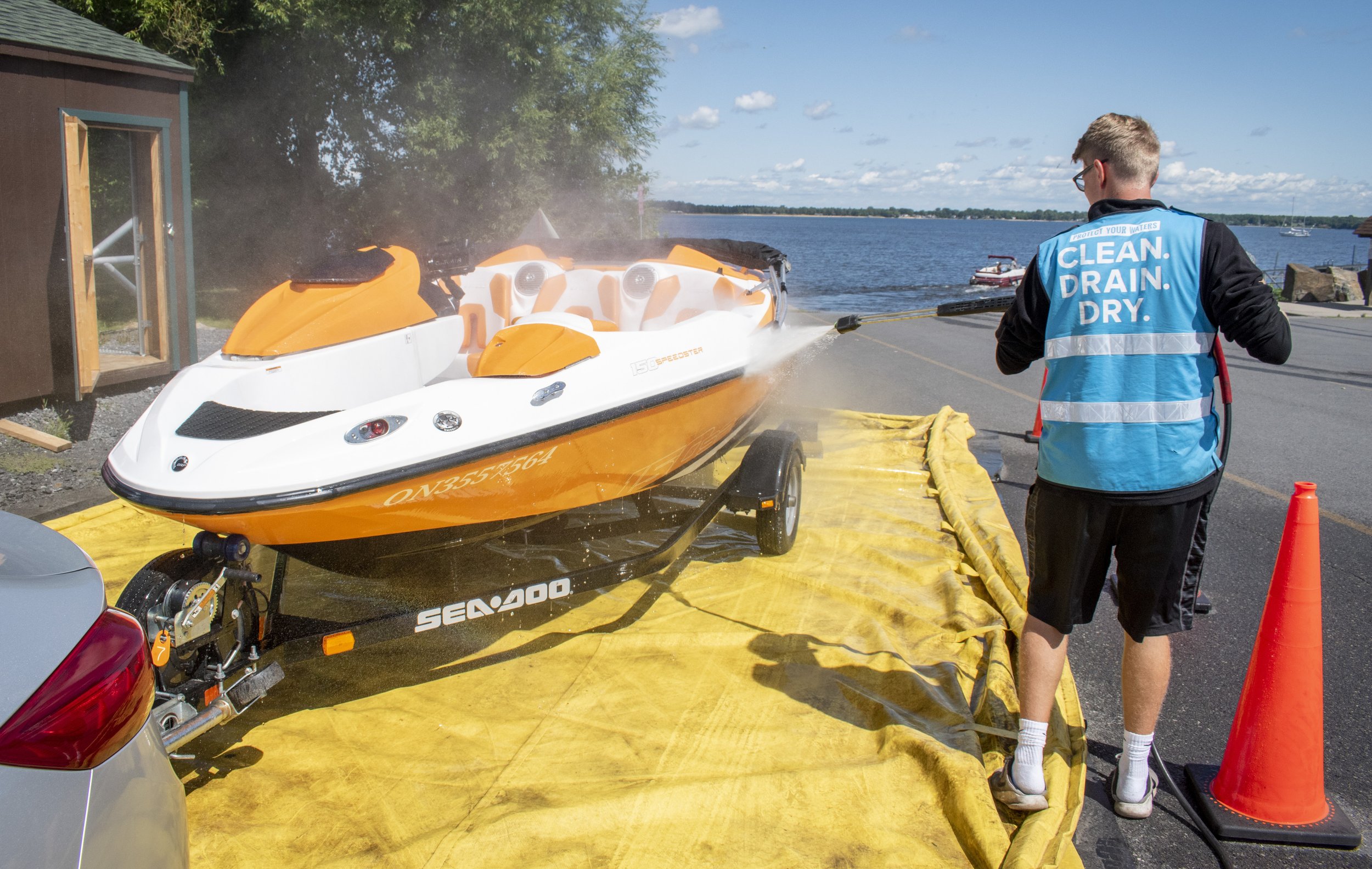
Boat Decontamination Process
Why is boat decontamination so important?
In addition to visual evidence of AIS, microscopic organisms may be present on boat hulls or motors or within compartments that contain standing water. Species like the spiny waterflea can be easily transported between waterways in the form of eggs; even the adult stage is difficult to detect. Proper decontamination of any watercraft that does not meet the Clean, Drain, Dry standard is the most effective way to prevent new AIS infestations.
What happens in the decontamination process?
Upon arrival at a decontamination station, you will be greeted by a technician and asked a few brief questions. Your vessel will then be inspected to see if it meets the Clean, Drain, Dry standard used throughout the Adirondacks and nationwide. If your boat meets the standard, you will be given a green ADK-Clean tag which acts as an indicator to watershed stewards across the Adirondacks that your vessel has already passed inspection. This gives you quicker access to waterways.
If your boat does not meet the standard, it requires decontamination. To save time and get you on the water as fast as possible, only the parts of boats that fail inspection need to be decontaminated. This could be flushing of a live well, lower unit, bilge or ballast tank using low pressure hot water to kill any organisms present in standing water. Boat hulls or motors with visible AIS will receive a high-pressure hot water cleaning from trained personnel. You may be asked to help during the process by lowering your outboard or starting your motor to execute flushing of the lower unit. Once the vessel is decontaminated, you will receive the green ADK-Clean tag to expedite waterway access. Feel free to ask stewards and technicians any questions you have about AIS, spread prevention, and boat wash stations throughout the park!
Boat Decontamination
The hot water pressure washer units will provide a safe mechanism to disinfect exterior surfaces, including hulls, propeller units, trailers, and top decking. For interior, sensitive locations, such as bilges, a low-pressure flush will be used. Equipment such as fishing gear and floatation devices will be soaked in hot water using low pressure. Stewards will work with boat owners to ensure proper hull disinfection without any damage to the boat, its components or any equipment.

